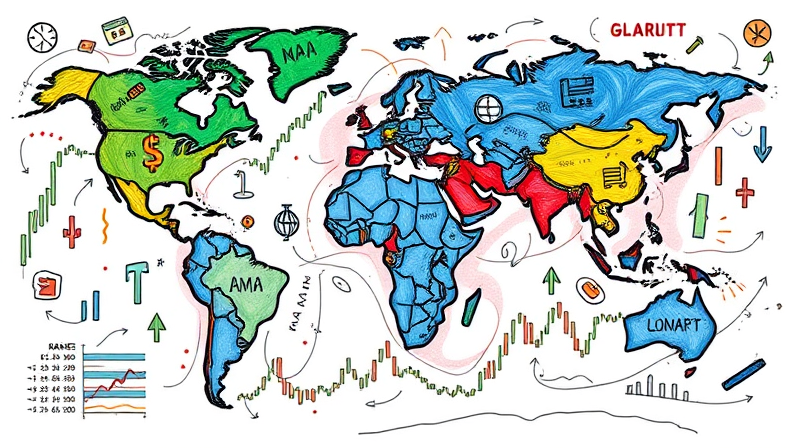
In an era of growing tension, every political tremor reverberates through financial centers from New York to Mumbai. Investors, policymakers, and ordinary citizens alike grapple with uncertainty as diplomatic spats and military conflicts send ripples across global markets.
The stakes have never been higher: rising political and military uncertainties now shape portfolios and national budgets alike, prompting a fresh look at risk management and strategic adaptation.
At its core, geopolitical risk encompasses any economic, political, or military event that can disrupt trade, shake confidence, and spark sudden market moves. These include wars, sanctions, terrorism, diplomatic crises, and shifts toward economic nationalism.
Understanding the full scope of these risks means recognizing how swiftly a localized conflict can trigger global price shocks, currency swings, and investor flight to safety.
The coming year is defined by multiple fault lines. Policymakers and investors must monitor:
Each of these flashpoints carries the potential for abrupt policy actions—tariffs, sanctions, production cuts—that can unsettle commodity and equity markets.
Decades of data reveal that while large-cap global equities often rebound quickly, local and emerging markets bear the brunt of short-term volatility.
Military conflicts can drive emerging-market equities down as much as 5% in a single month, while advanced economies often show more resilience.
Markets react to both fundamentals and emotion. While supply disruptions or tariff hikes directly affect corporate earnings, sentiment often amplifies initial shocks into broader sell-offs or rallies.
Key channels of impact include:
Traders may find opportunity in spikes of volatility, but without disciplined risk controls, they risk outsized losses.
Despite geopolitical headwinds, US equities have benefited from steady GDP growth and falling inflation. Corporate earnings are poised for roughly 15% growth in 2025, underscoring resilience in developed markets.
Long-term growth remains centered in Asia-Pacific. Investors seeking diversification may increase allocation to this dynamic region, balancing exposure to Western markets.
Defensive and strategic sectors—energy, defense, cybersecurity, and critical minerals—could outperform during bouts of heightened tension, offering potential for targeted outperformance.
Proactive risk management distinguishes those who weather crises from those who falter. Recommended approaches include:
Policymakers must also bolster resilience by maintaining capital buffers, ensuring fiscal flexibility, and enhancing transparency around sanctions and trade measures.
The Russia-Ukraine war triggered immediate spikes in oil, gas, and agricultural prices, fueling inflation across Europe. Export bans and counter-sanctions deepened supply chain bottlenecks.
In the Middle East, the Israel-Hamas conflict has intensified energy risk premiums, leading to sharper swings in Brent crude futures and regional stock markets.
Meanwhile, US-China tensions over technology and minerals have led to tariff escalations and supply-chain realignments, prompting multinational firms to re-shore production or seek alternative suppliers.
The expansion of BRICS+ signals a potential shift in reserve currency dynamics. While the US dollar retains dominance, its share could gradually decline if members boost intra-group trade and establish alternative payment systems.
Asia-Pacific’s sustained growth offers a counterbalance to Western headwinds. Nations like India, Indonesia, and Vietnam present compelling long-term investment cases, supported by demographic dividends and structural reforms.
At the same time, rising economic nationalism and retaliatory measures will require nimble policy responses to prevent trade spirals and maintain market confidence.
In a world of constant flux, informed decision-making and adaptive frameworks are essential. Geopolitical jitters need not paralyze markets; rather, they can be navigated with robust strategies and vigilance.
By understanding the full spectrum of risks, embracing diversification, and staying attuned to emerging trends, investors and policymakers can transform uncertainty into opportunity—and ensure that global markets remain resilient through the storms of 2025 and beyond.
References













